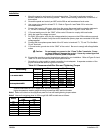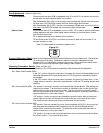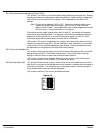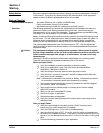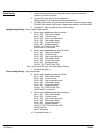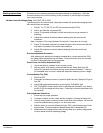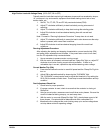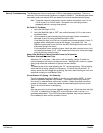
Section 4
Start-up
Start-up 4-1MN894
Safety Notice Be sure to read and understand all notices, warning and caution statements in Section 1
of this manual. If you have any questions about the safe operation of this equipment,
please contact your Baldor representative before you proceed.
Start-up Checklist
Recommended Equipment Volt meter (20kW per volt or better, true RMS meter).
Clamp on ammeter (5 times FLA full scale).
Adjustment wand (provided with multipurpose soft start control).
Overview The following adjustment procedures are examples and are intended to be used as a
guideline to match motor starting characteristics to the load. Actual loads may be
characterized by one or more of the examples. These procedures are intended to help
you design your own procedure for your specific application.
Keep in mind that reducing the starting current by one half will reduce the starting torque
by one fourth. This will cause the motor to take four times longer to reach full speed. In
situations where overloads tend to trip because of long starting times, increase the
starting current and decrease the ramp up time (RU) to help eliminate nuisance trips.
The potentiometer adjustments have a maximum span of 270°. Use the adjustment
wand (provided) to adjust these devices and do not force the adjustments beyond their
mechanical stops.
Caution: This equipment is shipped as a multipurpose apparatus. Before power is applied,
the line voltage selection and the full load current calibration must be correctly set.
Failure to select the proper line voltage or to calibrate the full load current may
cause damage.
Switches S1 and S2 as well as all potentiometer adjustments are not factory preset.
These will be set during the example procedures given in this section.
Before you apply Power
- Verify the installation procedure has been performed correctly.
- Know if your application is one of the “Non-motor and Special Motor
Applications” described in Section 2.
- Verify the wiring to the motor does not have any short circuits.
- Verify the motor is properly connected. Verify the voltage and full load amp
rating on the motor nameplate.
Note: A load must be connected to the control for testing. If the actual load cannot
be connected, connect any small motor temporarily for testing.
- Verify that the control transformer is properly jumpered for the line voltage at
your location. (MB#−XXX models).
- Verify that the control module jumper is correctly set for the line voltage.
(MA#−XXX models).
- Set S1 to the motor nameplate FLA value.
- Set S2 for the type of application.
- Set potentiometers as suggested.
- Verify the overload setting corresponds to the full load current range on the
calibration label.
After you apply Power
- Verify the input voltage to the starter and the 115VAC from the control
transformer (if a control transformer is installed).
- Verify the PWR light is on. (If not, refer to troubleshooting).
- Verify the shunt trip light is OFF. If it is ON, verify the motor is connected and
all three motor phases are present. If the motor is connected and the shunt trip
light is on, do not attempt to start the control. A short in the motor or wiring may
exist.
- Perform the starting procedure for your application.



